

Our mission is to ensure the generation of accurate and precise findings.
Contact Us Shivpratap Residency, Sect. 18, Pl No. 239, Shivaji Park, Chinchwad, Pune. +91 7558237303 get.in.touch@tanvient.com
Use this diet when switching your bird from its old diet to Roudybush. Continue to feed to adult birds that are not laying eggs or feeding chicks. Lories and lorikeets, which will accept this diet, will have drier droppings than they have on nectar. If you have a bird that is a chronic egg-layer or a bird with a tendency to develop hypocalcemia, mix 2/3 Maintenance with 1/3 High-Energy Breeder to supply more calcium and vitamin D3 . Do not give additional vitamin or mineral supplements. Fresh fruits and vegetables may be given as a minor part of the diet.
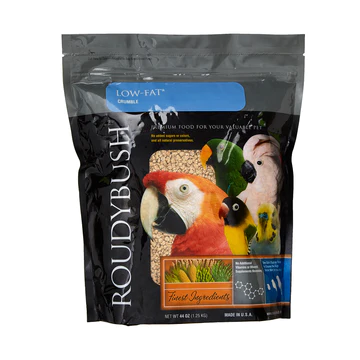
Feed to adult birds that are not laying eggs or feeding chicks and that have a tendency to be overweight. Mix 1/3 Breeder with 2/3 Low-Fat Maintenance for chronic egg-layers and birds with a tendency to develop hypocalcemia (such as African Greys). Do not give other vitamin or mineral supplements, but fresh fruit and vegetable treats may be given as a minor part of the diet.
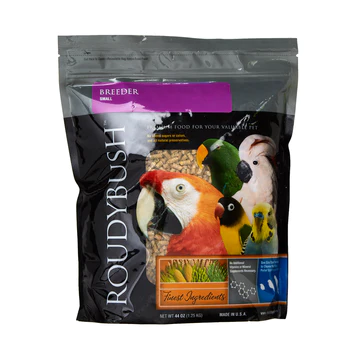
This diet meets the nutritional needs of the growing chick. Feed it to species that tend to get too fat, either as chicks or adults. Mix 1/3 Breeder with 2/3 Low-Fat Maintenance for overweight birds that are chronic egg layers or overweight birds with a tendency to develop hypocalcemia (such as African Greys). The mixture provides the extra calcium and vitamin D3 to support egg production or to meet the needs of birds that seem to need more calcium than other birds. Do not give additional vitamin or mineral supplements, such as cuttlebone, mineral block, or multivitamins. Fresh fruits and vegetables may be given as a minor part of the diet.
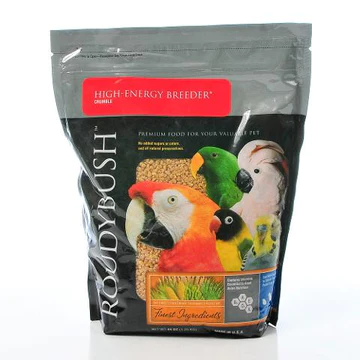
Feed to breeding birds that are feeding chicks. Wean chicks onto this diet for the fi rst 1–3 months post-weaning (3 months for the larger species, 1 month for the smaller species). High-Energy Breeder will provide these young birds with extra protein, calcium, and Vitamin D3 needed for the continued growth that occurs during that time. The higher energy will help put back the body weight lost in the weaning process. Mix 1/3 High-Energy Breeder to 2/3 Maintenance mixture for use in birds with a higher calcium need or that are being introduced to Roudybush. Do not give additional vitamin or mineral supplements, such as cuttlebone, mineral blocks, or multivitamins. Fresh fruits and vegetables may be given as a minor part of the diet.
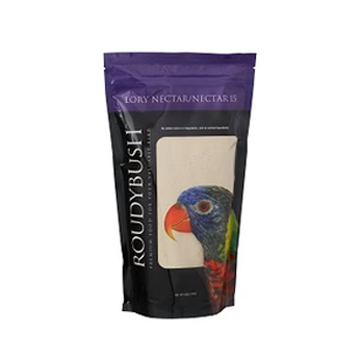
Nectar 15 is used in hummingbirds from 0–3 weeks of age; it contains 15% protein. In 1994, Roudybush also began marketing Nectar 15 under the name of Lory Nectar, for use in lories and lorikeets. Roudybush Lory Nectar is lower in sugar than other brands of nectars, so switching a bird from another brand of nectar sometimes requires adding a small amount of powdered sugar to the diet and slowly eliminating it to convert the birds. Less sugar is helpful to reduce incidence of yeast infections that lories are prone to due to the high sugar diets they are commonly fed. Some people grind up the maintenance pellets into a powder or convert their birds to a maintenance crumbles. Lories do very well on the maintenance diet. Feeding powdered pellets, crumbles or dry Lory Nectar will result in drier, easier to clean up droppings, making lories that much more pleasant to live with. Although some people use the Lory Nectar to handfeed lory chicks, we recommend using Formula 3. It provides a little higher protein needed for growth in the chicks and eliminates the sugar that could lead to yeast infections. Feed Lory Nectar dry or mixed with water to breeding or maintenance nectivores, such as lories and lorikeets. Do not give additional vitamin or mineral supplements. Fresh fruit treats may be given as a minor part of the diet. Breeder crumbles may be fed to lories and lorikeets feeding chicks, if they will accept them. The crumbles can be ground into a powder for better acceptability.
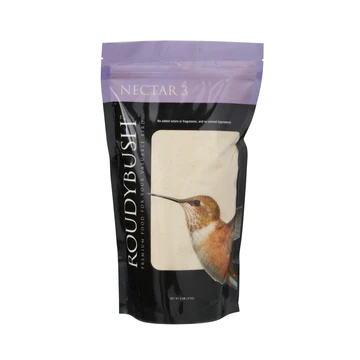
Formulated for adult hummingbirds at maintenance; it contains 3% protein.
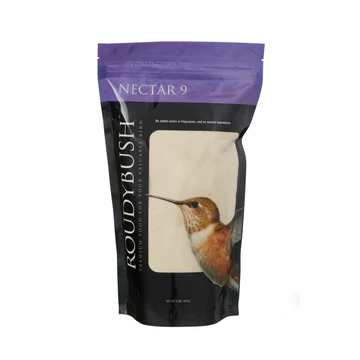
Formulated for fledgling hummingbirds from 3–6 weeks of age; it contains 9% protein.
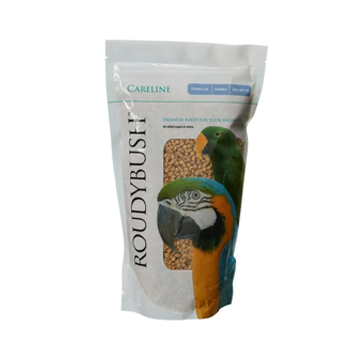
Formulated to provide nutritional support during a weight reduction period. This is a healthy alternative to feed restriction. This diet is a low energy, low fat, high fiber formulation to safely decrease caloric consumption.
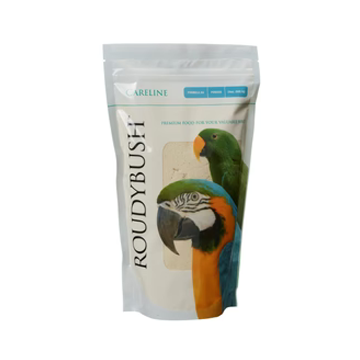
Formulated to provide nutritional support during a weight reduction period. This is a healthy alternative to feed restriction. This diet is a low energy, low fat, high fiber formulation to safely decrease caloric consumption.

Formulated to provide nutritional support for birds that may benefit from a low protein, low ash diet. This diet is aimed to reduce stress and the workload of the kidneys.
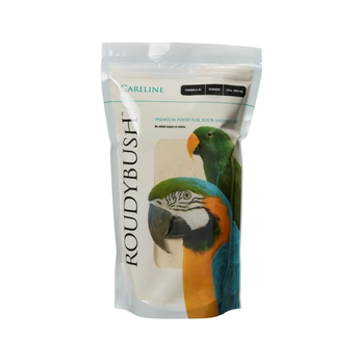
Created to provide nutritional support for birds that may benefit from a low protein, high vitamin and mineral diet. This diet is aimed to support the avian patient that has liver disease/damage.
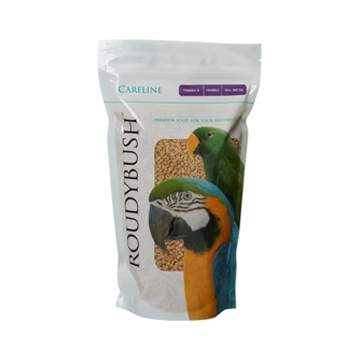
This diet is used to provide nutritional support for the avian patient with digestive disorders. It is formulated to promote a longer transit time through the digestive tract to enhance digestion and absorption, and to decrease diarrhea.

Formulated to provide nutritional support for the avian patient with malabsorption/ maldigestion. This diet is relatively high in vitamins, minerals, and protein. It provides support for birds with diseases such as Proventricular Dilatation Disease (PDD).